Edible Bird’s Nests collection is followed by cleaning processes. Nest cleaning is a very important and time-consuming process. A great deal of care is taken during the cleaning of nests. Nest cleaning is usually performed by means of the conventional cleaning process described below.
Conventional Cleaning Process
Generally, the harvested edible bird’s nests (EBN) consist of impurities like sand, feathers, egg shells, etc. The conventional cleaning process involves the immersion of nests in water and allowing them to swell. This enables an easy separation of the large feathers from the nest matrix by using forceps. However, care must be taken regarding the elution of the water soluble nutrients in EBN.
For the removal of the remaining small feathers, sometimes vegetable oil is used to float the feathers. However, addition of some bleaching agents like hydrogen peroxide to bleach the EBN has been carried out by some producers.
Use of hydrogen peroxide reduces the labour cost considerably, as the process is fast. The main drawback with using hydrogen peroxide is that it decolourises the black feathers (impurity) in addition to bleaching the nest colour to white. Therefore, the nests will appear clean but in reality some feathers still remain in the nest.
The hydrogen peroxide treated nests are claimed as safe and of food grade quality but, no producer has ever tried to assess the hydrogen peroxide content in nests after their processing. There are no clear guide lines in any country for the control of the tolerance limit of hydrogen peroxide content. Thus, the conventional method of nest cleaning suffers over health concerns. Hydrogen peroxide is a strong oxidant and harmful to the human body. Therefore, in order to avoid the hydrogen peroxide processed nests, it would be better for consumers to choose nest cups rather than nest cakes.
After cleaning process, the separated strands of EBN and broken filaments are arranged to make nest cake by molding. The shape of the mold could be in leaf shape, round or square, and it depends on the producer’s preference. This is followed by drying of the nests. The drying involves the use of fan or the nests are simply air dried. Many workers do not have adequate hygienic food processing knowledge, hence, they do not dry the nests quickly. This gives enough time to bacteria and fungi to grow prolifertate on the nests. Even the colour of some nests turn brownish or yellowish, and yet, the sellers call it the natural colour of the nests.
From the above discussion of the conventional cleaning methods and practices involved in the EBN cleaning industry, it can be seen that the conventional cleaning process of EBN has the following drawbacks.
- The use of bleaching agent, which may be harmful of even destroy some essential nutrients within the treated EBN.
- Additives degrade the nutritive and medicinal values of EBN.
- Preservatives also degrade the quality of EBN as a food and medicine.
- No care is taken of the preservation of nutrients during the treatment processes.
- Generally, tap water is used.
- The process uses the services of untrained workers.
- Little or no regard is given to hygienic practices
- Nest cakes are produced.
- Generally, there is no quality control protocol being followed.
Improvement in the Cleaning Processes
Generally, premium grade and quality raw bird’s nests are chosen from controlled. environment to avoid the presence of any heavy metals or other biological contaminants.
Skilled and well trained workers under the supervision of an expert are allowed to separate the feathers and dirt. High grade reverse osmosis water is used to ensure the cleanliness, and preserve the natural flavour and nutrients of the nest.
Processed bird‘s nests are dried in oven (no fan drying) until the right moisture content is achieved. Besides, implementation of the stringent quality control protocols for the end products will allow better grade of bird’s nest.
With the advancement of knowledge in the food processing technology, some of the requirements which are stated below should be implement in the bird’s nest cleaning industry. This will surely allow a better and healthy growth for the industry and increase the quality of the nests, since the public become more concerned we aware of the food they consume.
- Use of bleaching agent should not be encouraged
- Additives should be avoided.
- No preservatives should be used.
- Care should be taken of the preservation of nutrients.
- Reverse Osmosis water should be used for the cleaning processes.
- Highly skilled workers should be involved with the cleaning processes
- Hygienic practices should be encouraged.
- Whole nest cups should be developed.
- Quality Control is a must.


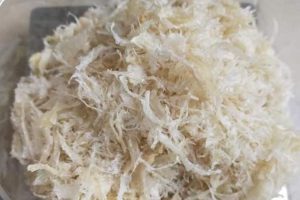
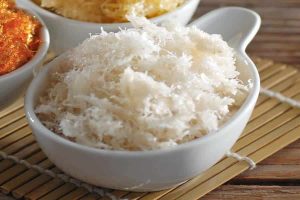
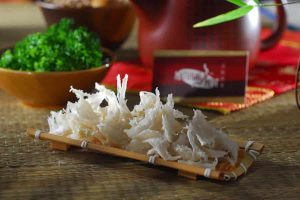
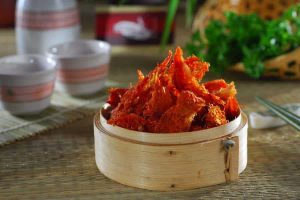
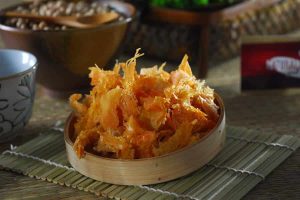










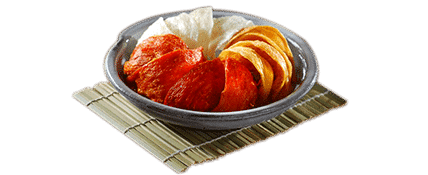
Is there a guideline, how to clean the nests in the right way?
Hi Brad, the right way is cleaning it manually using a tweezers and water. Hope it helps 🙂
workers not using any gloves. Haccp certified production way?
Hi Keith, many thanks for stopping by. Understand your concern there, the video you seen is only the very early stage of the cleaning process, there are a few more steps before the final production. All staff are professionally trained to comply with HACCP standard.
hi who knows the right buyer for bird nest?